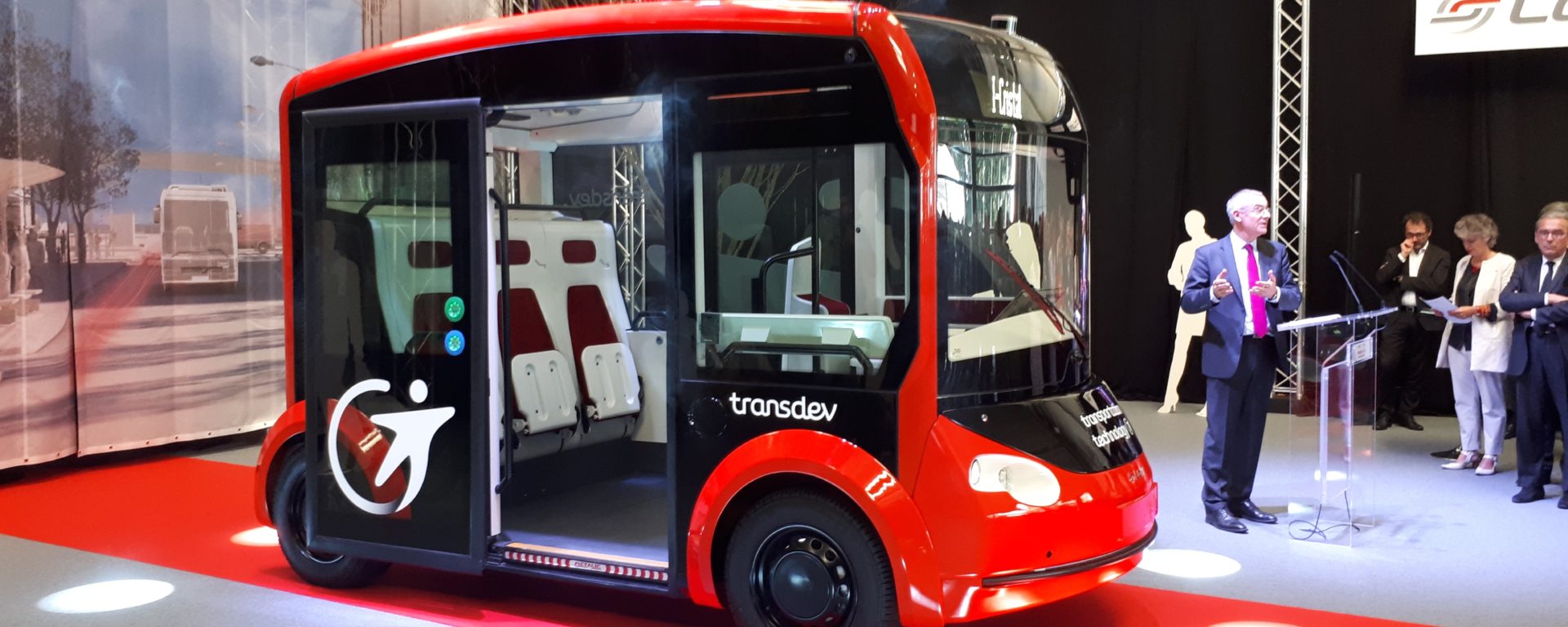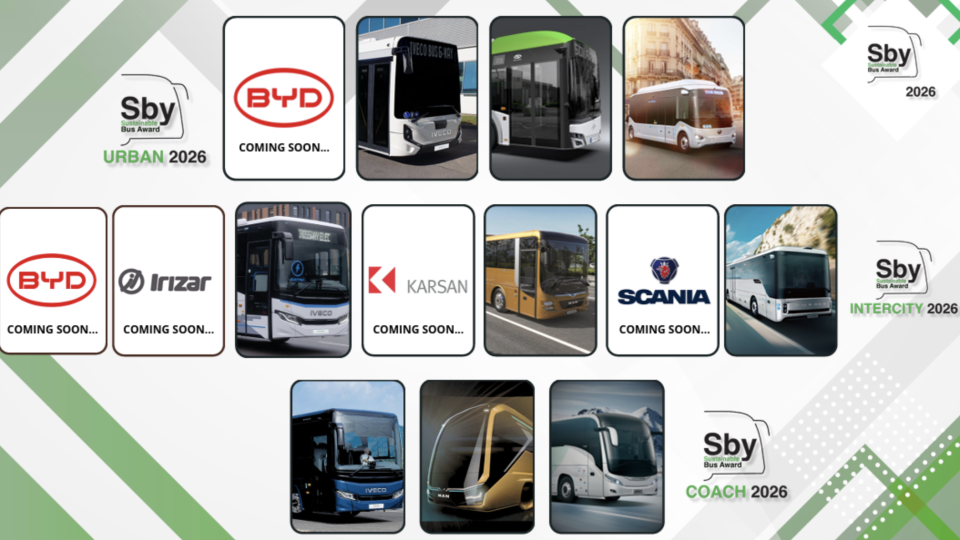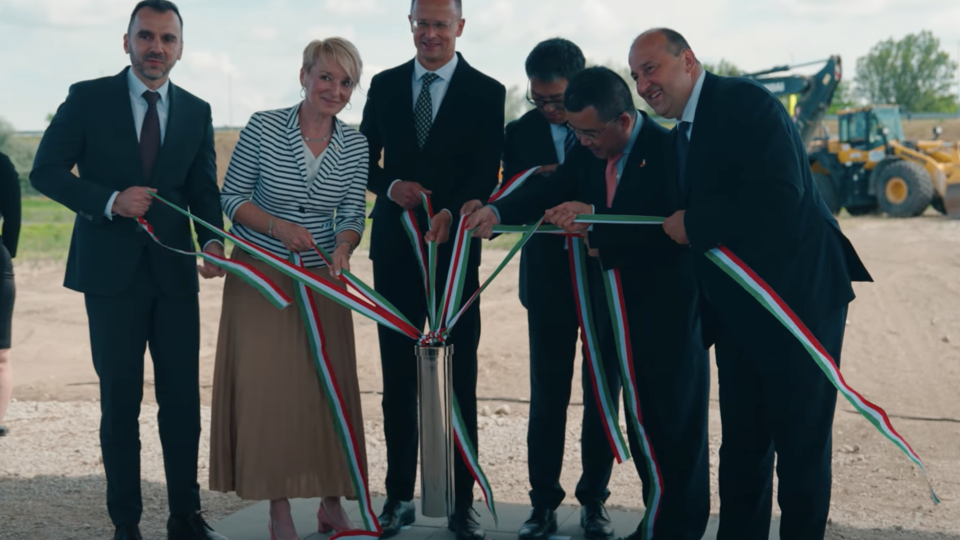Thierry Mallet, Transdev: the challenges public transport is facing
The Covid-crisis? The economic model of public transport is bound to change. The focus is on suburbs. Many challenges ahead, but they go along with new opportunities. Sustainability? The result of a mix of energies, and it’s crucial all of them get support. Hydrogen is the future, in the meanwhile biofuels will play a role. […]
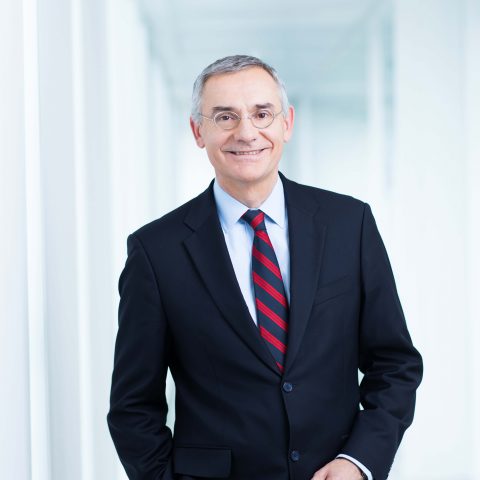
The Covid-crisis? The economic model of public transport is bound to change. The focus is on suburbs. Many challenges ahead, but they go along with new opportunities. Sustainability? The result of a mix of energies, and it’s crucial all of them get support. Hydrogen is the future, in the meanwhile biofuels will play a role. The target: zero emissions.
Thierry Mallet, Chairman and CEO of Transdev group, outlines how the company is dealing with the Covid crisis and the challenges and opportunities ahead, with a focus on the scenarios in terms of energy transition.
Thierry Mallet, Transdev: Covid consequences on transit
Mr. Thierry Mallet, Chairman and CEO of Transdev Group, do you think the Covid crisis will bring to long-term changes in the organization of public transport companies? What about Transdev?
«Starting with the short term, we had of course a significant impact on ridership and finances. During lockdown in spring we went down to 5% ridership, now with the second lockdown we are at 50% on average but running at full service, which is clearly not a sustainable situation. We forecast the loss of ridership will be around 50% for the year. We got partial compensation in all the countries where we are present, but it’ll take some time to recover. Our studies show that 20 to 30% of pre-Covid passengers may decide to use other means of transportation. We expect more people to remain working from homeand more turning to soft modes of transportation such as biking and walking. The increase in biking has been quite significant everywhere.
Some passengers, by fear, may also decide to go on using to their individual cars. We will have to target this last group to convince them to come back.
In the medium term, we therefore can expect to have less people in public transport, between 15 to 20% less. For instance, after the first wave, the best result we could achieve this year was an 80% ridership vs. 2019. It may be difficult to go beyond this figure. This means that we will need to define a new economic model. We will need to adapt the offer taking account the new demand as well as the economic constraints and we may have to reduce the level of service in some areas. On the other side, I see many opportunities».
Please…
«There are areas where the demand was not sufficiently satisfied, such as in the suburbs. If people in the city centers at the end of the crisis rely more on soft modes such as biking and walking, we could consider moving some of the buses from the city centers to the suburbs. In the greater Paris region, we extended the services at the request of Ile de France Mobilités and results were good: every 10% more service in the suburbs, we had a 15% more ridership».
And in the long term?
«In the long term, this crisis is highlighting the fragility of our global model. We need to pay more attention to the individual protection and strong sanitary measures are now a must everywhere. We can also expect a stronger focus on the protection of the planet and climate change: this is the real opportunity for public transport. Public transport is crucial in big cities, you can’t replace it with private cars. We will not achieve energy transition without public transport. Individual cars are a major source of GHG emission worldwide (between 15 to 20%) and the transition of cars to zero emission models will be slow. If we want to reduce emissions, a quick and efficient way is to bring more people to use public transport with an efficient offering which is a real alternative to the car and, secondly, ensure the transition of public transport to clean solutions. As a matter of fact, in this crisis I see great opportunities for public transit».
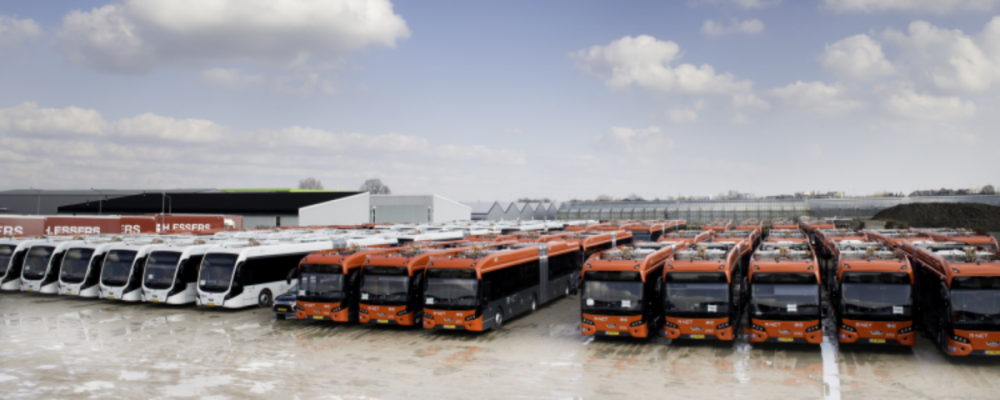
Energy transition: a matter of… mix
On Transdev website we read: «There is no universal solution for zero emissions. Innovation is required to support territories in their energy transition». In this regard, which trends are you observing in the areas of the world where your group is present?
«We see today our clients turning to a mix of energies. I think it is important on a European level to support all these types of energy. We see biogas rising up. In Ile-de-France we are transforming 22 depots from diesel-based to biogas that will be locally produced in the region. We see many moving to second generation biofuel, produced with agricultural waste. And of course, we see a strong move to electrification. Today as Transdev we are running around 3,000 gas-powered buses, and more and more are turning to biogas.
We have a few buses running on second generation bioethanol and we will operate more than 1,200 battery-electric buses at the end of this year. Finally, we have 10 to 12 hydrogen buses in operation today, and another 30 next year. With regards to hydrogen, the market is moving fast, but the economic model is not there yet. The mix of energies is a good solution. Electricity is a good solution for city buses but not necessarily for coaches, and with today’s technology it would end up transporting batteries instead of people».
On long distance applications we see that truck producers are turning to hydrogen. And this will have consequences on coaches…
«I strongly believe in hydrogen for long distances. But today there are four gaps to close. The first is energy efficiency: you need four times more energy than that you would need with battery-electric buses. The second is cost, still very high. Third, the availability and technological maturity of fuel cells: their life is today around five years, not as long as the lifespan of the vehicle. Finally, there is the production and distribution issue, plus today we have mostly grey hydrogen, not green which is what is needed to make it zero emission well to wheel.
Anyhow, European strategies on hydrogen are very good news because we can tackle these challenges only by investing in fleets, network, energy production, technology in order to become leader in this technology. I don’t think we are late».
Thierry Mallet: «Our clients are willing to test hydrogen buses»
Where are we standing now?
«At the moment, as mentioned above, we have 12 hydrogen buses in operation (6 in the Netherlands) and next year we’ll have 30 more: 20 in the Netherlands, five in Auxerre (France), 4 at the Toulouse airport, one in New Zealand and two in Sweden. We see clients willing to test this technology and this is good because we need to start investing, even on a small scale. It reminds me what we used to do five to ten years ago on battery-electric buses, with small trials everywhere».
Transdev has made public the group «operates the largest fleet of zero emissions buses in the world. By the end of 2020, this fleet will have 1,200 zero-emission buses in operation or on order, and 1,500 by 2024». Which lessons have you learnt so far? According to the data at your disposal, how do you forecast the evolution of the electric bus market in the next few years?
«There are forecasts that say we will have around 23,000 e-buses in Europe by 2025. Anyhow, it’s difficult to predict. What we see is that the market is growing fast. We are working with 20 manufacturers, and we observe it is a very innovative and fast-moving market. Every year you have new products and technological improvements. The switch from diesel to electric buses is a real transformation: it is necessary to redesign routes, think about the scheduling, adapting the network to the vehicles, taking into consideration the range. You really have to design your fleet to the needs of the network you are serving. And you need more people that have skills in the field of software».
Introducing large fleets of electric buses implies changes in the structure of a public transport company. How is Transdev changing, in terms of organization and skills, to get ready for the challenge?
«As the e-bus market is a fast-moving market, we decided to create a specific, centralized unit, a “Zero emission team” which is helping our subsidiaries all over the world. While diesel buses acquisition and optimization were a decentralized activity, with e-buses we decided to centralize it at least until the knowledge will be shared by everyone. So, we have a team of 10 experts dedicated to support this business all over the world so that we can be sure to benefit from the latest technologies».
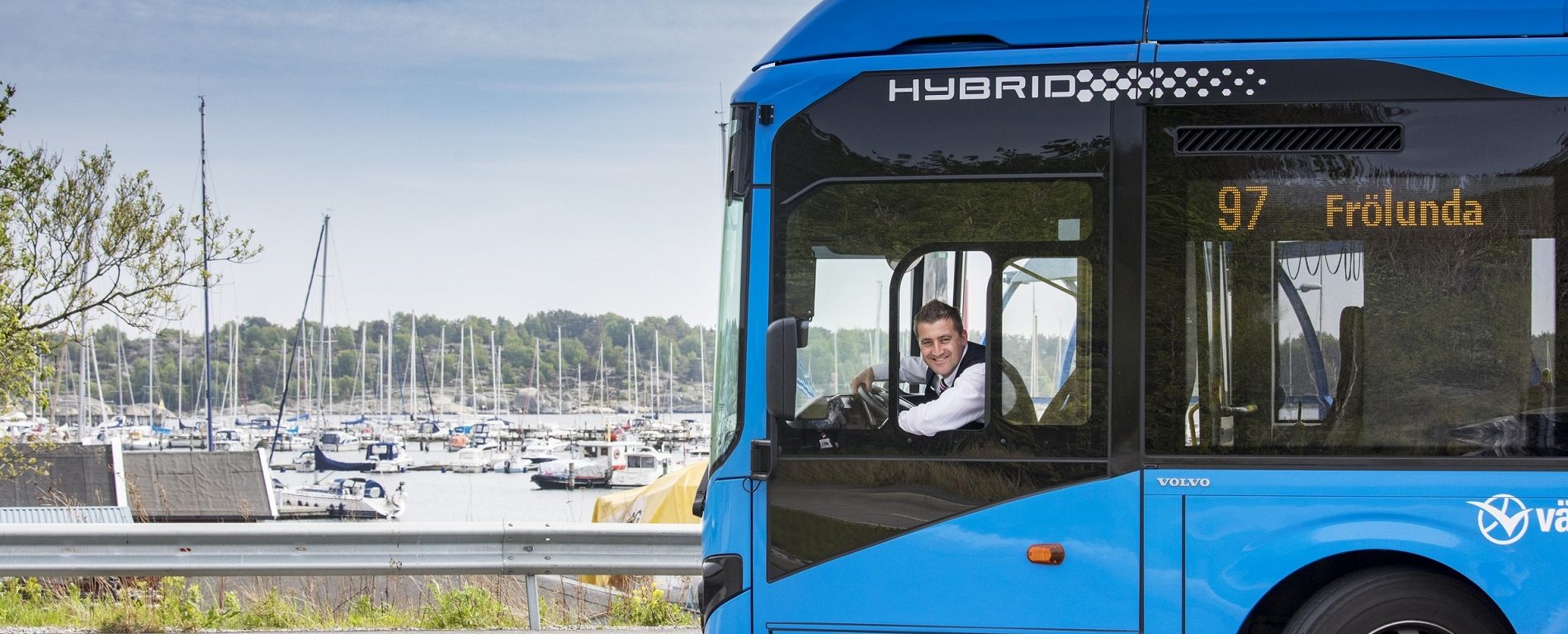
Gas-powered buses and the future of public transit
Do you think gas-powered applications (CNG-LNG) or biofuel can play a role in the energy transition process of public transport? May they be a long-term solution for some applications/regions, or a bridge to full electrification?
«I think the solutions that can last are biogas and biofuels. LNG has CO2 emissions; I wouldn’t treat it as biogas and biofuels. Anyhow, we need to understand that there will be a limited supply of these fuels if we want to rely only on renewable production. This makes them a good solution for coaches and trucks, until we will be ready to go with hydrogen solutions».
The emergence of macro trends such as digitalization and energy transition are already, according to many, bringing towards a concentration of public transport services in the hands of larger companies. Which is your opinion in this regard? Do you think the Covid pandemic will end up bringing a push in the same direction?
«It is a market full of small players that do a lot of local initiatives. The ones investing in the short term in electric fleets are the largest ones, but the smaller ones are moving in this direction also because now there are solutions available. We will still see a lot of very active small companies concentrating on smaller tenders, while larger companies focus on larger processes. Also, as a result of the crisis, we see a willingness from politicians to support local solutions and local companies. I don’t think there will be a big shift in the market».
In your opinion, are the financing schemes already put in place to support the energy transition in public transport sufficient? Which other tools should be used by public authorities to help the uptake of less polluting transport solutions? There are great talks about project financing, for instance…
«The strategies approved at a European level will be applied to several sectors, but they’ll be a great opportunity for transport as well. There is financing announced by Germany and France, with focus on hydrogen, that will benefit our sector. And we are waiting to see the European strategy on renewable energy and intelligent mobility that should be published soon.
I believe we will see more and more opportunities for so-called green financing. We see banks willing to contribute to green financing, we could mention EIB, with financing available both for PTOs and for PTAs. We recently closed our first green financing in Sweden with MUFG and Société Générale banks. My question is about taxonomy: it should not only be covering fuel cell and electric drives but also biogas and biofuel. If you only finance hydrogen, nobody will buy it in the short term because it is not competitive yet. We think it is important that taxonomy covers alternative fuels as well as EVs».
Autonomous buses, according to Transdev
Autonomous driving is another pillar of Transdev’s vision. With regards to driverless applications, where are we standing now?
«It is an important topic for us. We established a team named “Autonomous Transport Systems”, with 60 people focused on this topic. We are working on a global systemic approach including Autonomous vehicles or autonomous shuttles, running on connected infrastructures with its own sets of sensors will provide extra information needed and a third component which is a supervision system, with people be able to monitor the system and make decisions if needed.It could complement existing bus services.
We believe that with this global concept we can reach the development of efficient and safe autonomous public or shared transport systems running between 30 to 50 km/h by 2025. It could complement existing bus services.
We are developing and experimenting the required technologies with both international and local partners on two sites in France: Rouen in Normandy and Saclay in the Paris Region. This would increase significantly the efficiency and the cost of public transport. With the same number of drivers trained to be supervisors, you could run 3 to 5 times more vehicles improving the level of service and/or extending the coverage in space and time. This would contribute to increase significantly the attractiveness of Public Transportation.
With this concept, we are talking about Level 4 of autonomy: full autonomy in specific zones, specific roads, specific applications. For full autonomy (Level 5) we will go beyond 2030».
How do you see mobility in cities ten years from now?
«It’ll be zero emission everywhere and we’ll see hydrogen readily available. Autonomous buses and autonomous cars will be part of our life. I think soft modes will remain, with electric bikes gaining ground».
